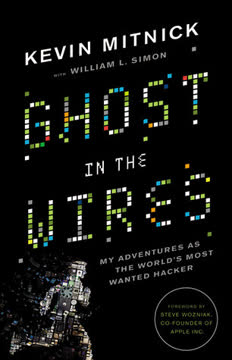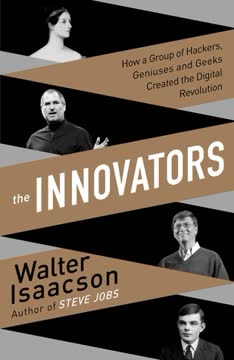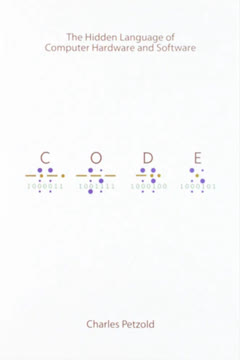Key Takeaways
1. The birth of hacker culture at MIT in the 1950s and 1960s
"Hackers believe that essential lessons can be learned about the systems—about the world—from taking things apart, seeing how they work, and using this knowledge to create new and even more interesting things."
The origins of hacking. The hacker culture emerged at the Massachusetts Institute of Technology (MIT) in the late 1950s and early 1960s. A group of brilliant students, fascinated by the potential of computers, began exploring and pushing the limits of the machines available to them. These early hackers were driven by curiosity, creativity, and a desire to understand and improve the systems they worked with.
Key figures and innovations. Notable early hackers included:
- Peter Samson: Created a music program for the TX-0 computer
- Alan Kotok: Developed the first chess program for a computer
- Steve Russell: Programmed Spacewar, the first interactive computer game
These pioneers laid the groundwork for future innovations in computing and established a unique culture centered around the exploration and mastery of technology.
2. The Hacker Ethic: A philosophy of openness, sharing, and hands-on exploration
"Access to computers—and anything that might teach you something about the way the world works—should be unlimited and total. Always yield to the Hands-On Imperative!"
Core principles. The Hacker Ethic, developed at MIT, was a set of values and beliefs that guided the early hacker community. Its key tenets included:
- Free access to information and technology
- Decentralization of power and authority
- Meritocracy based on skill and creativity, not formal credentials
- Belief in the transformative power of technology
Impact on computing. This philosophy led to:
- Open sharing of code and knowledge
- Collaborative problem-solving
- Rapid technological advancement
- A culture of continuous learning and improvement
The Hacker Ethic profoundly influenced the development of computing, laying the foundation for concepts like open-source software and the free exchange of ideas in the tech world.
3. The rise of hardware hackers and the personal computer revolution
"These were a different breed of hacker than the unapproachable wizards of MIT, but they still held to the Hacker Ethic that sublimated possession and selfishness in favor of the common good, which meant anything that could help people hack more efficiently."
Democratizing technology. In the 1970s, a new generation of hackers emerged, focused on making computers accessible to the masses. These hardware hackers, inspired by the ideals of the counterculture movement, sought to bring computing power out of corporate and academic institutions and into people's homes.
Key developments:
- The Altair 8800: The first personal computer kit, which inspired many hackers
- The formation of computer clubs, where enthusiasts shared knowledge and ideas
- The creation of user-friendly interfaces and software for personal computers
This movement laid the groundwork for the personal computer revolution, transforming computing from a specialized field into a tool for everyday use and personal empowerment.
4. Homebrew Computer Club: Incubator of the microcomputer industry
"It was the fertile atmosphere of Homebrew that guided Steve Wozniak through the incubation of the Apple II."
A crucible of innovation. The Homebrew Computer Club, founded in Silicon Valley in 1975, became a central hub for hardware hackers and computer enthusiasts. It provided a platform for sharing ideas, demonstrating new inventions, and collaborating on projects.
Impact on the industry:
- Served as a launching pad for numerous computer companies
- Facilitated the rapid spread of technical knowledge
- Inspired the development of groundbreaking products like the Apple I and II
The club embodied the Hacker Ethic of openness and collaboration, while also nurturing the entrepreneurial spirit that would drive the personal computer industry's growth.
5. The Apple II: Steve Wozniak's masterpiece of hacker ingenuity
"Wozniak's Apple was another story. Growing up in a conventional family in the sheltered, suburban California world of single homes, science fairs, and McDonald's burgers, Wozniak had inbred security. He felt comfortable taking chances, letting the design go as far as his imagination could take him."
Revolutionary design. The Apple II, created by Steve Wozniak in 1977, represented the pinnacle of hacker ingenuity in personal computing. Its key features included:
- An elegant, efficient design that maximized the potential of available components
- Built-in color graphics and sound capabilities
- An open architecture that encouraged user modification and expansion
Impact on computing. The Apple II:
- Made personal computing accessible and appealing to a broader audience
- Inspired a new generation of software developers and computer enthusiasts
- Helped establish Apple as a major force in the emerging personal computer industry
Wozniak's creation embodied the hacker ideal of pushing technological boundaries while making computing more accessible and user-friendly.
6. The commercialization of hacking: From hobby to industry
"As companies like On-Line wrote and sold more programs, people who had no desire to become programmers, let alone hackers, began to buy computers, intending only to run packaged software on them."
Shift in focus. As personal computers became more popular, the hacker culture began to evolve. Many hackers transitioned from hobbyists to entrepreneurs, forming companies to sell their creations. This shift led to:
- The development of commercial software products
- The growth of the computer retail industry
- Increased emphasis on user-friendly interfaces and applications
Challenges to hacker values. The commercialization of hacking created tensions within the community:
- Conflict between open sharing and proprietary software
- Debate over the role of profit in technological innovation
- Concerns about the loss of the original hacker spirit
This transition marked a significant change in the relationship between hackers and the wider world, as their creations became mainstream consumer products.
7. Sierra On-Line: The birth of the computer game industry
"Ken Williams decided he had to have one. So in January 1980 he scraped together 'every cent I had,' as he later told it, and bought an Apple II."
Pioneering game development. Sierra On-Line, founded by Ken and Roberta Williams in 1979, played a crucial role in the emergence of the computer game industry. Their key contributions included:
- Creation of the first graphic adventure game, "Mystery House"
- Development of innovative game design and programming techniques
- Establishment of a new business model for software distribution
Impact on the industry:
- Demonstrated the commercial potential of computer games
- Inspired numerous other game developers and companies
- Helped establish gaming as a major driver of personal computer adoption
Sierra On-Line's success story illustrated how hacker creativity could be channeled into successful business ventures, paving the way for the modern gaming industry.
8. The evolution of hacker culture in the 1980s
"The Hacker Ethic was changing, even as it spread throughout the country. Its emissaries were the small, low-cost computers sold by Apple, Radio Shack, Commodore (the PET), and Atari."
Mainstreaming of hacker culture. As personal computers became more widespread in the 1980s, aspects of hacker culture began to permeate broader society. This led to:
- Increased public interest in programming and computer technology
- The emergence of "user communities" around specific computer platforms
- A growing recognition of the importance of digital literacy
Challenges and adaptations:
- Tension between the original hacker ideals and commercial realities
- The need to balance openness with intellectual property concerns
- Efforts to maintain the spirit of exploration and creativity in a more structured industry
This period saw hacker culture both influencing and being influenced by mainstream society, as computing became an integral part of everyday life.
Last updated:
FAQ
What's Hackers: Heroes of the Computer Revolution about?
- Exploration of hacker culture: The book delves into the lives and philosophies of early computer hackers, portraying them as adventurers and visionaries who saw computing as a revolutionary tool.
- Hacker Ethic: Steven Levy introduces the concept of the Hacker Ethic, which emphasizes sharing, openness, and the belief that access to computers should be unlimited.
- Historical context: The narrative spans from the 1950s to the 1970s, highlighting key figures and events that shaped the computer revolution, including the development of influential machines like the TX-0 and PDP-1.
Why should I read Hackers: Heroes of the Computer Revolution?
- Insight into technology's evolution: The book provides a fascinating look at how early hackers contributed to the development of modern computing.
- Understanding hacker mentality: Readers gain insight into the motivations and philosophies of hackers, helping to demystify the often misunderstood hacker culture.
- Cultural significance: Levy's work captures the spirit of innovation and rebellion that characterized the hacker movement, making it a compelling read for those interested in technology and society.
What are the key takeaways of Hackers: Heroes of the Computer Revolution?
- Hacker Ethic principles: The book outlines the Hacker Ethic, which includes beliefs such as "Access to computers—and anything that might teach you something about the way the world works—should be unlimited and total."
- Importance of collaboration: Levy emphasizes the collaborative nature of hacking, where knowledge is shared freely, leading to innovation and improvement of systems.
- Impact on society: The narrative illustrates how hackers have influenced not just technology, but also societal structures, advocating for decentralization and open access to information.
Who are the main figures in Hackers: Heroes of the Computer Revolution?
- Peter Samson: A key hacker who contributed to the development of the PDP-1 and was involved in various projects, including the famous LIFE simulation.
- Richard Greenblatt: Known for his work on AI and chess programming, Greenblatt exemplifies the hacker's dedication to systems and programming.
- Bill Gosper: A mathematician and hacker who became obsessed with the LIFE game, contributing significantly to its development and exploring its implications.
What is the Hacker Ethic as defined in Hackers: Heroes of the Computer Revolution?
- Access to information: The Hacker Ethic posits that "all information should be free," advocating for unrestricted access to knowledge and resources.
- Hands-On Imperative: Hackers believe in the necessity of direct interaction with systems to understand and improve them, emphasizing practical experience over theoretical knowledge.
- Mistrust of authority: The ethic promotes skepticism towards bureaucratic systems, encouraging decentralization and individual empowerment in the pursuit of knowledge.
How did the hacker culture evolve in the 1970s according to Hackers: Heroes of the Computer Revolution?
- Shift to hardware hacking: The 1970s saw a rise in hardware hackers who focused on building and modifying computers, moving away from the purely software-centric approach of earlier hackers.
- Community-driven projects: Initiatives like Community Memory emerged, aiming to bring computers to the public and promote the Hacker Ethic outside of academic and corporate environments.
- Spread of hacker ideals: As hackers migrated to new locations, such as Stanford, they carried their philosophies with them, influencing the development of new hacker cultures across the country.
What challenges did hackers face in Hackers: Heroes of the Computer Revolution?
- Bureaucratic restrictions: Hackers often encountered resistance from institutions that imposed strict rules and regulations, limiting their access to computers and resources.
- Public perception: The negative stereotypes of hackers as socially awkward or malicious individuals created barriers to understanding and acceptance of their contributions to technology.
- Internal conflicts: Tensions arose between hackers and academic or corporate entities, particularly regarding the direction of research and the prioritization of practical applications versus theoretical exploration.
How does Hackers: Heroes of the Computer Revolution relate to modern technology?
- Foundation of open-source movement: The principles of the Hacker Ethic laid the groundwork for the open-source software movement, which advocates for free access to software and collaborative development.
- Influence on tech culture: The book illustrates how the hacker mentality has permeated modern tech culture, promoting innovation, creativity, and a DIY approach to technology.
- Continued relevance of hacking: The challenges and philosophies discussed in the book remain pertinent today, as issues of privacy, access to information, and the role of technology in society continue to evolve.
What role did the Homebrew Computer Club play in the computer revolution?
- Networking Hub: The Homebrew Computer Club acted as a networking hub for hardware hackers, fostering collaboration and the exchange of ideas.
- Launchpad for Innovations: Many successful companies and products, including Apple, emerged from the ideas and innovations shared within the club.
- Community Spirit: The club embodied the spirit of the Hacker Ethic, promoting openness and the sharing of knowledge among its members.
How did the emergence of personal computers change the hacker landscape according to Hackers: Heroes of the Computer Revolution?
- Accessibility of Technology: Personal computers made technology accessible to a broader audience, allowing more people to engage in hacking and programming.
- Shift in Focus: The focus shifted from large, institutional systems to individual creativity and innovation, as more people began to see computers as tools for personal expression.
- Commercialization of Hacking: The rise of personal computers also led to the commercialization of hacking, with many hackers transitioning into successful entrepreneurs in the software industry.
How does Hackers: Heroes of the Computer Revolution address the commercialization of software?
- Shift in values: The book discusses how the rise of commercial interests has led to a departure from the original Hacker Ethic, prioritizing profits over creativity.
- Impact on innovation: It argues that commercialization can stifle innovation by imposing restrictions on how software can be used and shared.
- Examples of conflict: The narrative includes specific instances where hackers faced challenges from corporations, illustrating the ongoing struggle between idealism and profit.
What is the significance of the term "hacker" in Hackers: Heroes of the Computer Revolution?
- Positive connotation: The book emphasizes that "hacker" originally referred to someone who was innovative and skilled in programming, not a criminal or malicious figure.
- Cultural identity: It explores how the hacker identity has evolved over time, becoming associated with creativity, problem-solving, and a spirit of exploration.
- Misunderstanding and stigma: The book addresses the negative stereotypes that have emerged around hackers, particularly in the media, and advocates for a more nuanced understanding of their contributions.
Review Summary
Hackers receives mostly positive reviews, praised for its insight into early computer history and the hacker culture. Readers appreciate the detailed accounts of pioneering figures and the book's engaging storytelling. Some criticize its length, occasional technical inaccuracies, and dated perspectives on gender in tech. The book is divided into three parts, covering MIT hackers, hardware enthusiasts, and early game developers. Many consider it essential reading for those interested in computer science history, despite its flaws.
Similar Books






Download PDF
Download EPUB
.epub digital book format is ideal for reading ebooks on phones, tablets, and e-readers.





